The first unreleased prototyped version of the Super Game Module
from 1983.



"Super Game Module
# 3."
Expands the memory capacity of your ColecoVision Game System
To let you play even more realistic arcade games !.
More than ever before. ColecoVision
Expansion Module # 3 brings Home the arcade experience with computer-age
precision!.
This Super Game Module plugs right into the expansions port on your
ColecoVision console and plugs you into a world
of finer-than-ever game detail!.
After you've hooked it up, just slip in a
Super Game Wafer, and you're ready for the videogame expendence of a
lifetime.
Super Game Wafers capture every last detail of arcade games...
The subtle nuances like "intermissions" and the special extras too.
You can even post your initials on the High-Scores on the screen...Just
like in the real arcade games.
In fact, they'll even do some things that you
won't even see in the arcades, such as let you try your hand at
challenging new game variations.
Expansions Module # 3 includes not one but
two bonus wafers...
A SUPER DONKEY KONG by Nintendo, and a SUPER GORF by Midway...
Both so-true-to-the-arcade that you'll have to play them to believe them!.
We'll also be following these up within
the next few months with 7 additional vividly-detailed Super Game Wafers,
plus many others to come.
Data: 30K RAM and 128K Microwafers.
Rumors say that it was possible to play your old cartridges on your
ColecoVision with the SGM add-on connected.
Why could Coleco not release it.

Coleco Industries was in 1983 ready to build the next generation Game
console, that should have been launched in 1987 say the rumors.
In 1983 had Coleco take the crown from Mattel and Atari, and they
developed a prototype
of the new game console.
That should be the next generation of Coleco's new ColecoVision console, and there was now over
29 game developers for ColecoVision.
Coleco's new module was now over 30 times stronger than Atari 2600.
It had 30k Ram and could load a game of 128 Kb. = 100 game screens.
Super means: a closer conversion of a coin-up, where you'll have all inter-mission, high scores and not least several levels.
The game should have used the Entrepo micro-wafer operating system from Exatron,
later Entrepo Corporation.
The games would be launched in a Super High Speed Wafer Tape Drive, that
was a new concept to store games in.
Coleco's plan was new "Super versions" of their previous games for ColecoVision.
A game could load in for around 10 seconds.
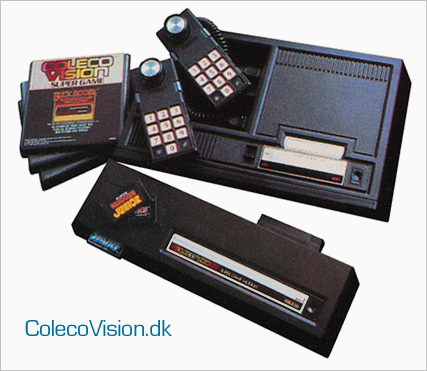
The very first former prototype SGM, was a disguise ColecoVision in a new and stronger version.
It was not playable when it was prensented at Toy Fair in february in
1983.
It was however, its cousin, namely the very rare Sega SC-3000H, which was
pedant to the SGM.
The SGM first launch plan for the Super Games was:
Super Donkey Kong, Super Donkey Kong Jr., Super Front Line, Super Gorf, Super Smurf, Super Zaxxon,
Super Time Pilot, Super Turbo, Super Subroc and
Super Buck Rogers.
Coleco decided in a last moment to drop their Super Game Module,
then
Coleco's accounts were put forward,
and then lost around $ 34 millions.

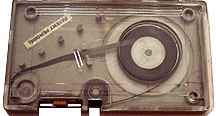
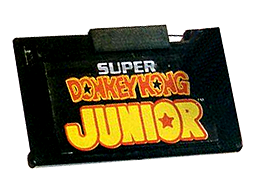
There were troubles with the tapes for the SGM, they don't work proberly
and they was sensitive for many things.
Other thing Coleco tried was the Super Game Pack.
It could store a so called Super Game, bigger the 16k, and with all screen
and intermissions like the real Arcade game.
Furthermore said Coleco back in 1983 that the new Super Games was a
revolution.
It could even store more than one game in the same Super Game.
But it became only a dream.
It was very expensive for Coleco Industries to bring this dream into
reality.
But as long as it malfunctioned with the tapes would Coleco Inc. not post
any more money in the project.
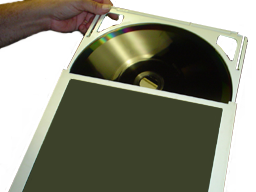
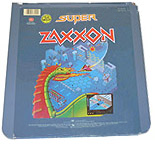
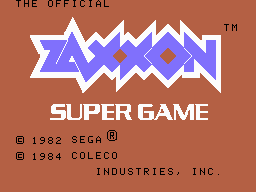
Therefore had Coleco Inc.
already a whole new idea,
They would build in RCA's CED System, known as a kind vinyl record, in a sealed
plastic
box.
It was much more reliable, and well known from the RCA Video-disc.
RCA had build a version that could handle controllable random access.
That could have been a great venture for both RCA and Coleco Inc., and could have a State of The Art Video game and a Video player at once.
But just as Coleco was started with the development of SGM with a CED
player had RCA discontinued their own project, and in 1986 lose RCA estimated
$600 million in the process.
But why did Coleco
Industries not chose a floppy-disk system ?.
Because it was to much expensive at that time, -around $ 300,- for a 5¼".
But why did Coleco
Industries so in stead chose the much cheaper cassette system ?.
They believed that even the inexpensive system could be just as good, and
then it was up to and competitive.
It reads in high speed, but was still to slow and prone to more errors, therefore was the Micro-drive an middle-range alternative.
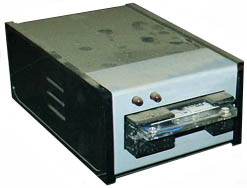
A tape wafer system from the 80's.
This device is not related to the SGM nor Coleco.
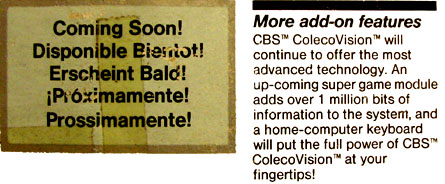
This text was printed
on the backside on the original CBS ColecoVision box from 1983.
Because of RCA's huge loss on development of a new CED system called
Dimensa was SGM completely dropped.
Coleco bet now fully getting the launch of ADAM computer on the market.
Can we blame ADAM for the big loss ?. -Coleco industries big movement on the
homecomputer-market ?.
There was many problems with the introducing of the ADAM Family Computer
System, and the competition was
rough.
The introduction of ADAM was a wrong decision, ADAM was large, cumbersome
and awkward.
After Coleco dropped the original SGM, the games
Super Donkey Kong and Super Buck Rogers was released later for ADAM in
their DDP
Tape/Data recorder.
After the American game crash decided Nintendo in 1983 to release their own game console in Asia in their own name, and
decided to stop all licensing to ColecoVision and ATARI.
In 1985 became the Asian Nintendo console also introduced in Australia,
Europe and U.S.
The NES machine became, -in that time the new king of game consoles.
Nintendo had its NES System on the market in a 10-year period, and sold
more than 61.91 million copies.
There was no other on the market to take up the battle against Nintendo in
that period.
Coleco Inc. were simply forced to its knees, and was never able to rise
again.
------------------------------
Here is what former Coleco employee Bill Rose wrote:
Date: March 15, 2010.
SGM Another great story.
The microwafer drive was the endless loop I mentioned. Didn't work.
The Supergame Module was supposed to be based on that but as CES neared we
realized it couldn't cut it.
The unit that went to CES had to use ROM'd games "under the covers". The
tapes only held the ROM bank select number repeated over and over.
We would simply read the ROM bank code off the tapes, delay starting the
game for a period of time and then play it from ROM.
Had some quirks too. If someone removed the tape during play and put in
another tape, the old game continued to play unless they hit reset.
Some uncomfortable moments in front of press as the demonstrator screwed
up. The rest is history.
As for the "Super" games, we released some of them on Adam tapes for play
on the Adam.
I still have Super Zaxxon and others though I doubt they still play - the
tape drives were a bit "finiky' even then.
I know one of our old techs who still has copies of almost everything we
ever developed.
We did release a floppy drive for the Adam toward the end but too late to
save it. Also too expensive.
We did work on an optical disk game system but the games were very poor.
The problem was the disks were really video disks so the games attempted
to use branching based on the player's moves.
Do something and branch to another video scene, do something else, branch
again. Seel times were slow so you had to wait a few seconds to see the
next branch.
The video processing at the time was too limited to seemlessly add game
play or over lay the video.
Also they were not good as data disks (no real data format) so loading
data took some work. Killed that one too.
What no one knows is that we also developed an Apple II knock off in 3
chips.
However, following on the heels of Adam, the banks wouldn't loan the money
to go into production even though we did complete the design.
ASICs, built prototypes and had negotiated with JVC to build it.
It was a land mark machine. It used the Windows concept before the MAC was
out (no one knew to call them Windows and we never patented the idea) -
drop down menus, etc.
It also included a 2400 baud dial up modem and a phone.
We could play head to head games over the phone lines, download/upload
files (even unattended over night), etc.
Pick up the phone, your contact list would pop up - in the middle of a
game!! Make the call by pushing a button or dialing and then resume the
game.
Touch the calculator keypad and a calc would pop up on the screen, etc.
The case was designed by Porsch.
Very cool and way ahead of its time. We had working models - don't know
what happened to them.
Also developed a next gen video game system - 32 sprites per line (Colecovision
had 4), much better graphics, colors, and sound.
But the real kicker were the 4 vector engines that used the graphics
engine for background graphics.
The vector graphics created the space ships, etc. on the full graphics
background. I believe we could handle 2K vectors at 30 frames per second.
And with the integral dial up modem, we could play real-time head to head
games with multiple players over phone lines,
since each player would put up his own background graphics and simply send
the vector information (very compact) over the phone.
Unfortunately Coleco exited the video game market before we could launch
it.
But we did have working prototypes.
They were exciting times. I ran Advanced R&D and had a team that
eventually broke up and went to Sun, Apollo, Apple, Intel, and others.
Very talented team.
We did some Artificial Intelligence work as well for products like the
Talking Cabbage Patch Dolls (each doll had a digital RF network to let
them coordinate their scripts
- they talked to each other, sang songs together, etc.
Another Coleco first was Laser Tag which was eventually released by Worlds
of Wonder.
Bill.
Tha article is given to ColecoVision.dk with permission from Joe Blenke.
Date: April 20, 2010.
Last updated:
February 13
2021.
May 04 2014.